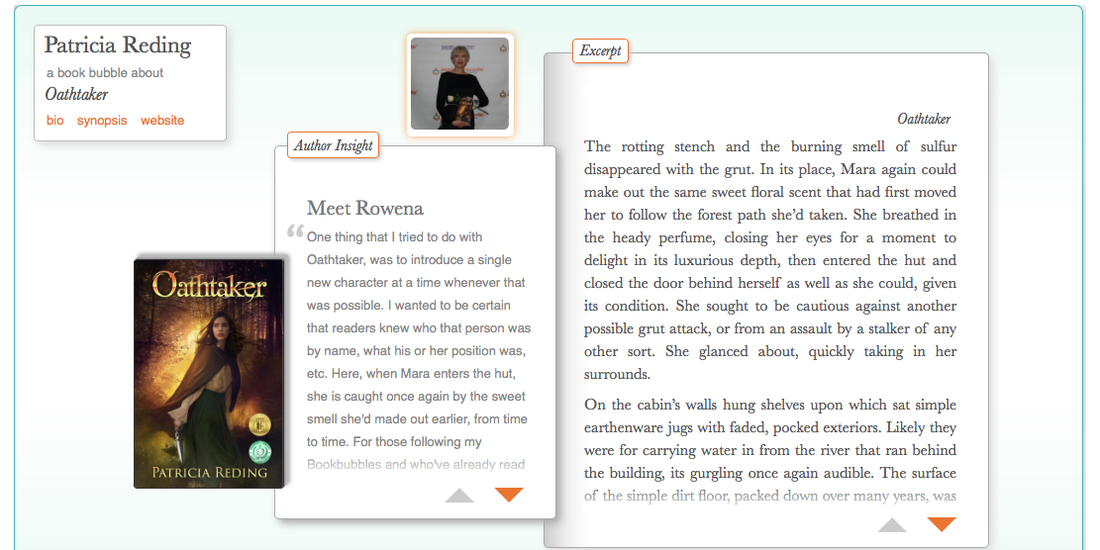Press Releases
Submit your book review as a press release to all your local media (newspapers, magazines, radio, television news, etc.) If your book appeals to a specific niche, make sure you submit your press release to any publications online, or otherwise, which cater to the demographic of your readership. Don't forget to use online free press release services to help spread the word.
Back Cover
If you've received a positive review from a reputable review agency, make sure you put it out there where potential buyers can see it. Use a quote, or an excerpt of a quote for any future print runs of your book. Don't forget to credit the source of the reviewer; if you've received a great review from the New York Times, then you want to make sure everyone knows about it!
Banners & Signage
If you're attending book-signings at festivals or other venues, you'll want to create professional looking signage. Banners and signs are a great place to promote positive reviews of your book. Take the time to do this well. Professional looking banners with sturdy banner-stands are eye-catching and can do wonders to create a professional image for you and your book. If a banner is impractical, or out of the budget, you can also print professional looking signs to place inside plexiglass frames.
Social Media
Do you have a blog? Great! Post your review there. Don't forget to share your review on your Facebook, Twitter, Google + and LinkedIn pages. Make sure to use #hashtags to increase your post's visibility. Go ahead, be shameless, and ask your friends and family to like and share your posts.
Amazon's Editorial Reviews
The Editorial Review Section on your Amazon Author Central profile was created to help you bring attention to your professional reviews and literary achievements. This is a great place for sharing your success as an author!
GoodReads Profile
Post your reviews in your GoodReads profile (go to your dashboard to do this). Also, don't forget to blog the review in GoodRead's blog section.
Your Barnes and Noble Profile
Post your review in the section entitled: More About This Book. Take the time to get this right the first time though, because Barnes and Noble does not make it easy to edit your posts here.
Your Website
Post all, or a portion of your all your positive reviews on your website. Don't forget to include images and logos (with permission) to help bring attention to those reviews which have been provided from reputable and well-recognized agencies. If you have a media page include a PDF of your review which can be downloaded directly from your site.
Your Sell-Sheet
Your sell-sheet is the perfect place to include reviews of your book. A sell-sheet should include pertinent information for bookstores, libraries, and buyers to tell them why and how to purchase your book.





 Agents, editors, and maybe you, the author, know the curse of the “good” book. The book that’s perfectly fine, that works, that tells an interesting story, and that is, sad to say, darn near unsellable. The rejections often contain phrases like “didn’t fall in love,” or “just didn’t feel strongly enough,” leavened with genuine compliments about the writing or characterization. After years of learning the craft of story and voice, you’ve finally created a nearly flawless novel, one you know is as good (heck, better!) than a lot of stuff on the shelf. And it just…doesn’t…sell.
Agents, editors, and maybe you, the author, know the curse of the “good” book. The book that’s perfectly fine, that works, that tells an interesting story, and that is, sad to say, darn near unsellable. The rejections often contain phrases like “didn’t fall in love,” or “just didn’t feel strongly enough,” leavened with genuine compliments about the writing or characterization. After years of learning the craft of story and voice, you’ve finally created a nearly flawless novel, one you know is as good (heck, better!) than a lot of stuff on the shelf. And it just…doesn’t…sell. When I say publishers don’t want good books, I don’t mean they’re after bad ones either. Nobody is more passionate about compelling fiction than your friendly neighborhood editor, whether the novel in question is a beautiful, heart-breaking, cry-on-the-subway coming of age, or a heart-pounding, unforgettable, so-damn-sexy-you-need-a-time-out fantasy, romance, or action/adventure. Though you may have found writing on the shelf at Barnes & Noble that makes your skin crawl (in the bad way), fiction is a subjective business, and I guarantee that even if it isn’t your brand of beer, every novel published made someone, somewhere, feel something profound- whether it was excitement, intrigue, or love.
When I say publishers don’t want good books, I don’t mean they’re after bad ones either. Nobody is more passionate about compelling fiction than your friendly neighborhood editor, whether the novel in question is a beautiful, heart-breaking, cry-on-the-subway coming of age, or a heart-pounding, unforgettable, so-damn-sexy-you-need-a-time-out fantasy, romance, or action/adventure. Though you may have found writing on the shelf at Barnes & Noble that makes your skin crawl (in the bad way), fiction is a subjective business, and I guarantee that even if it isn’t your brand of beer, every novel published made someone, somewhere, feel something profound- whether it was excitement, intrigue, or love.